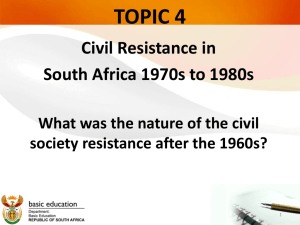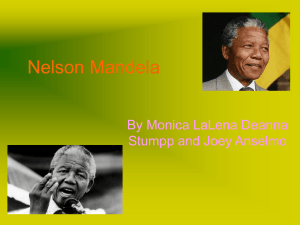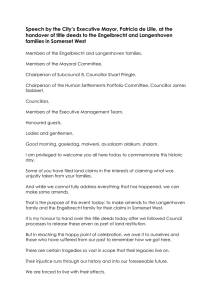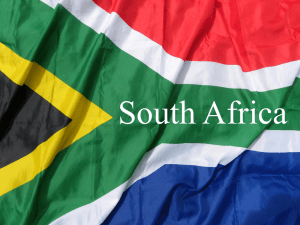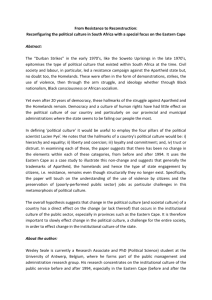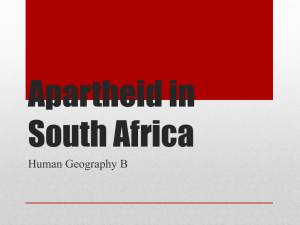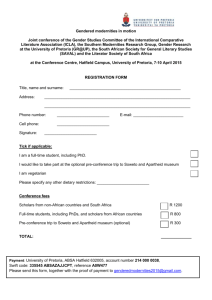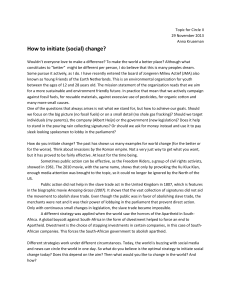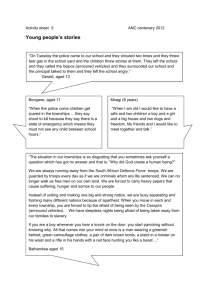P2 ESSAY 2: Resistance to Botha`s reforms SYNOPSIS Candidates
advertisement
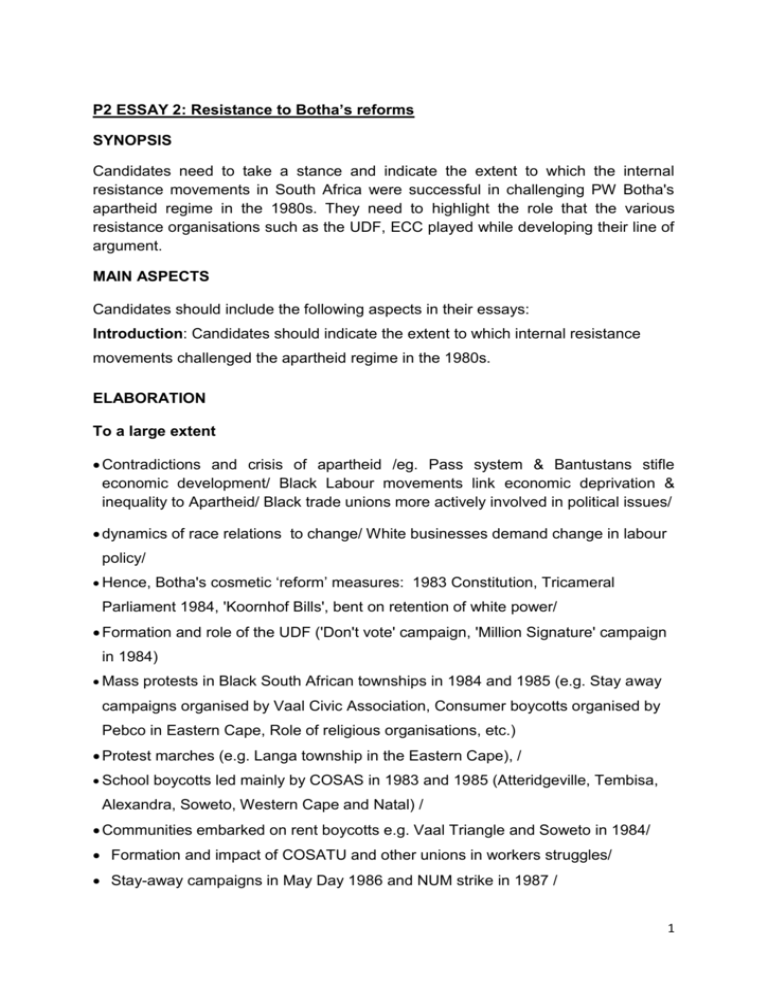
P2 ESSAY 2: Resistance to Botha’s reforms
SYNOPSIS
Candidates need to take a stance and indicate the extent to which the internal
resistance movements in South Africa were successful in challenging PW Botha's
apartheid regime in the 1980s. They need to highlight the role that the various
resistance organisations such as the UDF, ECC played while developing their line of
argument.
MAIN ASPECTS
Candidates should include the following aspects in their essays:
Introduction: Candidates should indicate the extent to which internal resistance
movements challenged the apartheid regime in the 1980s.
ELABORATION
To a large extent
Contradictions and crisis of apartheid /eg. Pass system & Bantustans stifle
economic development/ Black Labour movements link economic deprivation &
inequality to Apartheid/ Black trade unions more actively involved in political issues/
dynamics of race relations to change/ White businesses demand change in labour
policy/
Hence, Botha's cosmetic ‘reform’ measures: 1983 Constitution, Tricameral
Parliament 1984, 'Koornhof Bills', bent on retention of white power/
Formation and role of the UDF ('Don't vote' campaign, 'Million Signature' campaign
in 1984)
Mass protests in Black South African townships in 1984 and 1985 (e.g. Stay away
campaigns organised by Vaal Civic Association, Consumer boycotts organised by
Pebco in Eastern Cape, Role of religious organisations, etc.)
Protest marches (e.g. Langa township in the Eastern Cape), /
School boycotts led mainly by COSAS in 1983 and 1985 (Atteridgeville, Tembisa,
Alexandra, Soweto, Western Cape and Natal) /
Communities embarked on rent boycotts e.g. Vaal Triangle and Soweto in 1984/
Formation and impact of COSATU and other unions in workers struggles/
Stay-away campaigns in May Day 1986 and NUM strike in 1987 /
1
Emergence of the Mass Democratic Movement in1989 and the Defiance
campaign against segregation laws in major cities e.g. Cape Town, Durban and
Johannesburg./
White Liberals participated in Black liberation struggles through Black Sash—who
rendered humanitarian and practical support to victims of Apartheid/—and through
the End Conscription Campaign (ECC),/-disgruntled whites who refused to serve
in the apartheid army that was being deployed in black townships and in
neighbouring states/
State responses to resistance: minor reforms (eg. abolition of Immorality Act)/ fol
lowed by state repression , bent on “Total Onslaught” and “Total Strategy” polio
cies’ /
eg. increasing the size of the police and the army/, introducing a 2-year compul
sory military service for white males/, declaring a state of emergency between
1985-1986, in many magisterial districts,/ giving the police wider powers, / and
forming a Valkplaas (death camps) headed by Eugene De Kock/ attempting to
“Win the hearts and minds” of conservative Black elite and the youth/
By 1989 political stalemate /1980s thousands South Africans lost their lives in
their struggle for Liberation (e.g. death in detention, 'black on black' violence and
vigilantisms)/ collapsed of communism/ a financially and militarily weaker ANC/
SA troops withdrawal from Namibia/ economic decline/ FW de Klerk forced to
negotiated a ‘New’ SA./
• Any other relevant response
• Conclusion: Candidates should tie up their argument with a relevant conclusion.
OR
If candidates should indicate to a lesser extent they need to substantiate their argument
with relevant examples.
(50)
2
